1.
Introduction
The scientists and mathematicians across many disciplines have always been fascinated to study indefinite structures on manifolds. When a manifold is endowed with a geometric structure, we have more opportunities to explore its geometric properties. There are different classes of submanifolds such as warped product submanifolds, biharmonic submanifolds and singular submanifolds, etc., which motivates further exploration and attracts many researchers from different research areas [26,27,28,29,30,31,32,33,34,35,36,37,40,41,42,43,44,45,46,47,48,49,50]. After A. Bejancu et al. [7] in 1993, introduced the concept of an idefinite manifold namely ϵ-Sasakian manifold, it gained attention of various researchers and it was established by X. Xufeng et al. [53] that the class of ϵ-Sasakian manifolds are real hypersurfaces of indefinite Kaehlerian manifolds. On the other hand K. Kenmotsu [25] introduced a special class of contact Riemannian manifolds, satisfying certain conditions, which was later named as Kenmotsu manifold. Later on U. C. De et al. [14] introduced the concept of ϵ-Kenmotsu manifolds and further proved that the existence of the new indefinite structure on the manifold influences the curvatures of the manifold. After that several authors [20,21,52] studied ϵ-Kenmotsu manifolds and many interesting results have been obtained on this indefinite structure.
A smooth manifold M equipped with a Riemannian metric g is said to be a Ricci soliton, if for some constant λ, there exist a smooth vector field V on M satisfying the equation
where LV denotes the Lie derivative along the direction of the vector field V and S is the Ricci tensor. The Ricci soliton is called shrinking if λ>0, steady if λ=0 and expanding if λ<0. In 1982, R. S. Hamilton [22] initiated the study of Ricci flow as a self similar solution to the Ricci flow equation given by
Ricci soliton also can be viewed as natural generalization of Einstein metric which moves only by an one-parameter group of diffeomorphisms and scaling [11,23]. After Hamilton, the significant work on Ricci flow has been done by G. Perelman [38] to prove the well known Thurston's geometrization conjecture.
A. E. Fischer [16] in 2005, introduced conformal Ricci flow equation which is a modified version of the Hamilton's Ricci flow equation that modifies the volume constraint of that equation to a scalar curvature constraint. The conformal Ricci flow equations on a smooth closed connected oriented n-manifold, n≥3, are given by
where p is a non-dynamical (time dependent) scalar field and r(g) is the scalar curvature of the manifold. The term-pg acts as the constraint force to maintain the scalar curvature constraint in the above equation. Note that these evolution equations are analogous to famous Navier-Stokes equations where the constraint is divergence free. The non-dynamical scalar p is also called the conformal pressure. At the equilibrium points of the conformal Ricci flow equations (i.e., Einstein metrices with Einstein constant −1n) the conformal pressure p is equal to zero and strictly positive otherwise.
Later in 2015, N. Basu and A. Bhattacharyya [6] introduced the concept of conformal Ricci soliton as a generalization of the classical Ricci soliton and is given by the equation
where λ is a constant and p is the conformal pressure. It is to be noted that the conformal Ricci soliton is a self-similar solution of the Fisher's conformal Ricci flow equation. After that several authors have studied conformal Ricci solitons on various geometric structures like Lorentzian α-Sasakian Manifolds [15] and f-Kenmotsu manifods [24]. Since the introduction of these geometric flows, the respective solitons and their generalizations etc. have been a great centre of attention of many geometers viz. [1,2,3,4,5,8,9,13,17,40,41,42,43,44,45,46,47] who have provided new approaches to understand the geometry of different kinds of Riemannian manifold. Recently Sarkar et al. [48,49,50] studied ∗-conformal η-Ricci soliton and ∗-conformal Ricci soliton within the frame work of contact geometry and obtaind some beautiful results.
Again a Ricci soliton is called a gradient Ricci soliton[11] if the concerned vector field X in the Eq (1.1) is the gradient of some smooth function f. This function f is called the potential function of the Ricci soliton. J. T. Cho and M. Kimura [12] introduced the concept of η-Ricci soliton and later C. Calin and M. Crasmareanu [10] studied it on Hopf hypersufaces in complex space forms. A Riemannian manifold (M,g) is said to admit an η-Ricci soliton if for a smooth vector field V, the metric g satisfies the following equation
where LV is the Lie derivative along the direction of V, S is the Ricci tensor and λ, μ are real constants. It is to be noted that for μ=0 the η-Ricci soliton becomes a Ricci soliton.
Very recently M. D. Siddiqi [51] introduced the notion of conformal η-Ricci soliton given by the following equation
where LV is the Lie derivative along the direction of V, S is the Ricci tensor, n is the dimension of the manifold, p is the non-dynamical scalar field (conformal pressure) and λ, μ are real constants. In particular if μ=0 the conformal η-Ricci soliton reduces to the conformal Ricci soliton.
The outline of the article goes as follows: In Section 2, after a brief introduction, we give some notes on ϵ-Kenmotsu manifolds. Section 3 deals with ϵ-Kenmotsu manifolds admitting conformal η-Ricci solitons and establish the relation between λ and μ. In Section 4, we have contrived conformal η-Ricci solitons in ϵ-Kenmotsu manifolds in terms of Codazzi type Ricci tensor, cyclic parallel Ricci tensor and cyclic η-recurrent Ricci tensor. Section 5 is devoted to the study of conformal η-Ricci solitons on ϵ-Kenmotsu manifolds satisfying curvature conditions R⋅S=0, C⋅S=0, Q⋅C=0. In Section 6, we have studied torse-forming vector field on ϵ-Kenmotsu manifolds admitting conformal η-Ricci solitons. Section 7 is devoted to the study of gradient conformal η-Ricci soliton on ϵ-Kenmotsu manifold. Lastly, we have constructed an example to illustrate the existence of conformal η-Ricci soliton on ϵ-Kenmotsu manifold.
2.
Preliminaries
An n-dimensional smooth manifold (M,g) is said to be an ϵ-almost contact metric manifold [7] if it admits a (1,1) tensor field ϕ, a characteristic vector field ξ, a global 1-form η and an indefinite metric g on M satisfying the following relations
for all vector fields X,Y∈TM, where TM is the tangent bundle of the manifold M. Here the value of the quantity ϵ is either +1 or −1 according as the characteristic vector field ξ is spacelike or timelike vector field. Also it can be easily seen that rank of ϕ is (n−1) and ϕ(ξ)=0, η∘ϕ=0. Now if we define
for all X,Y∈TM, then the manifold (M,g) is called an ϵ-contact metric manifold.
If the Levi-Civita connection ∇ of an ϵ-contact metric manifold satisfies
for all X,Y∈TM, then the manifold (M,g) is called an ϵ-Kenmotsu manifold [14].
Again an ϵ-almost contact metric manifold is an ϵ-Kenmotsu manifold if and only if it satisfies
Furthermore in an ϵ-Kenmotsu manifold (M,g) the following relations hold,
where R is the curvature tensor, S is the Ricci tensor and Q is the Ricci operator given by g(QX,Y)=S(X,Y), for all X,Y∈TM.
Moreover, it is to be noted that for spacelike structure vector field ξ and ϵ=1, an ϵ-Kenmotsu manifold reduces to an usual Kenmotsu manifold.
Next, we discuss about the projective curvature tensor which plays an important role in the study of differential geometry. The projective curvature has an one-to-one correspondence between each coordinate neighbourhood of an n-dimensional Riemannian manifold and a domain of Euclidean space such that there is a one-to-one correspondence between geodesics of the Riemannian manifold with the straight lines in the Euclidean space.
Definition 2.1. The projective curvature tensor in an n-dimensional ϵ-Kenmotsu manifold (M,g) is defined by [55]
for any vector fields X,Y,Z∈TM and Q is the Ricci operator.
The manifold (M,g) is called ξ-projectively flat if P(X,Y)ξ=0, for all X,Y∈TM.
A transformation of a Riemannian manifold of dimension n, which transforms every geodesic circle of the manifold M into a geodesic circle, is called a concircular transformation [54]. Here a geodesic circle is a curve in M whose first curvature is constant and second curvature (that is, torsion) is identically equal to zero.
Definition 2.2. The concircular curvature tensor in an ϵ-Kenmotsu manifold (M,g) of dimension n is defined by [54]
for any vector fields X,Y,Z∈TM, and r is the scalar curvature of M.
The manifold (M,g) is called ξ-concircularly flat if C(X,Y)ξ=0 for any vector fields X,Y∈TM.
Another important curvature tensor is W2-curvature tensor which was introduced in 1970 by Pokhariyal and Mishra [39].
Definition 2.3. The W2-curvature tensor in an n-dimensional ϵ-Kenmotsu manifold (M,g) is defined as
Definition 2.4. An ϵ-Kenmotsu manifold (M,g) is said to be an η-Einstein manifold if its Ricci tensor S satisfies
for all X,Y∈TM and smooth functions a,b on the manifold (M,g).
3.
ϵ-Kenmotsu manifolds admitting conformal η-Ricci solitons
Let us consider an ϵ-Kenmotsu manifold (M,g) admits a conformal η-Ricci soliton (g,ξ,λ,μ). Then from Eq (1.2) we can write
for all X,Y∈TM.
Again from the well-known formula (Lξg)(X,Y)=g(∇Xξ,Y)+g(∇Yξ,X) of Lie-derivative and using (2.6), we obtain for an ϵ-Kenmotsu manifold
Now in view of the Eqs (3.1) and (3.2) we get
This shows that the manifold (M,g) is an η-Einstein manifold.
Also from Eq (3.3) replacing Y=ξ we find that
Compairing the above Eq (3.4) with (2.12) yields
Thus the above discussion leads to the following
Theorem 3.1. If an n-dimensional ϵ-Kenmotsu manifold (M,g) admits a conformal η-Ricci soliton (g,ξ,λ,μ), then (M,g) becomes an η-Einstein manifold and the scalars λ and μ are related by ϵλ+μ=ϵ(p2+1n)+(n−1).
Furthermore if we consider μ=0 in particular, then from Eqs (3.3) and (3.5), we get
This leads us to write
Corollary 3.2. If an n-dimensional ϵ-Kenmotsu manifold (M,g) admits a conformal Ricci soliton (g,ξ,λ), then (M,g) becomes an η-Einstein manifold and the scalar λ satisfies λ=(p2+1n)+ϵ(n−1). Moreover,
1. if ξ is spacelike then the soliton is expanding, steady or shrinking according as, (p2+1n)>(1−n), (p2+1n)=(1−n) or (p2+1n)<(1−n); and
2. if ξ is timelike then the soliton is expanding, steady or shrinking according as, (p2+1n)>(n−1), (p2+1n)=(n−1) or (p2+1n)<(n−1).
Next we try to find a condition in terms of second order symmetric parallel tensor which will ensure when an ϵ-Kenmotsu manifold (M,g) admits a conformal η-Ricci soliton. So for this purpose let us consider the second order tensor T on the manifold (M,g) defined by
It is easy to see that the (0,2) tensor T is symmetric and also parallel with respect to the Levi-Civita connection.
Now in view of (3.2) and (3.3) the above Eq (3.6) we have
Putting X=Y=ξ in the above Eq (3.7) we obtain
On the other hand, as T is a second order symmetric parallel tensor; i.e., ∇T=0, we can write
for all X,Y,Z,U∈TM. Then replacing X=Z=U=ξ in above gives us
Using (2.10) in the above Eq (3.9) we get
Taking covariant differentiation of (3.10) in the direction of an arbitrary vector field X, and then in the resulting equation, again using the Eq (3.10) we obtain
Then in view of (2.6) and (2.7), the above equation becomes
Now using (3.8) in the above Eq (3.11) and in view of (3.6) finally we get
This leads us to the following
Theorem 3.3. Let (M,g) be an n-dimensional ϵ-Kenmotsu manifold. If the second order symmetric tensor T:=Lξg+2S+2μη⊗η is parallel with respect to the Levi-Civita connection of the manifold, then the manifold (M,g) admits a conformal η-Ricci soliton (g,ξ,λ,μ).
Now let us consider an ϵ-Kenmotsu manifold (M,g) and assume that it admits a conformal η-Ricci soliton (g,V,λ,μ) such that V is pointwise collinear with ξ, i.e., V=αξ, for some function α; then from the Eq (1.2) it follows that
Then using the Eq (2.6) in above we get
Replacing Y=ξ in the above equation yields
By virtue of (2.12) the above Eq (3.13) becomes
By taking X=ξ in the above Eq (3.14) gives us
Using this value from (3.15) in the Eq (3.14) we can write
Now taking exterior differentiation on both sides of (3.16) and using the famous Poincare's lemma, i.e., d2=0, finally we arrive at
Since dη≠0 in ϵ-Kenmotsu manifold, the above equation implies
In view of the above (3.17) the Eq (3.16) gives us dα=0 i.e., the function α is constant. Then the Eq (3.12) becomes
for all X,Y∈TM. This shows that the manifold is η-Einstein. Hence we have the following
Theorem 3.4. If an n-dimensional ϵ-Kenmotsu manifold (M,g) admits a conformal η-Ricci soliton (g,V,λ,μ) such that V is pointwise collinear with ξ, then V is constant multiple of ξ and the manifold (M,g) is an η-Einstein manifold. Moreover the scalars λ and μ are related by μ+ϵ[λ−(p2+1n)]=(n−1).
In particular if we put μ=0 in (3.17) and (3.18) we can conclude that
Corollary 3.5. If an n-dimensional ϵ-Kenmotsu manifold (M,g) admits a conformal Ricci soliton (g,V,λ,μ) such that V is pointwise collinear with ξ, then V is constant multiple of ξ and the manifold (M,g) is an η-Einstein manifold, and the scalars λ and μ are related by λ=(p2+1n)+ϵ(n−1). Furthermore,
1. if ξ is spacelike then the soliton is expanding, steady or shrinking according as, (p2+1n)+n>1, (p2+1n)+n=1 or (p2+1n)+n<1; and
2. if ξ is timelike then the soliton is expanding, steady or shrinking according as, (p2+1n)+1>n, (p2+1n)+1=n or (p2+1n)+1<n.
4.
Conformal η-Ricci solitons on ϵ-Kenmotsu manifolds with certain special types of Ricci tensor
The purpose of this section is to study conformal η-Ricci solitons in ϵ-Kenmotsu manifolds admitting three special types of Ricci tensor namely Codazzi type Ricci tensor, cyclic parallel Ricci tensor and cyclic η-recurrent Ricci tensor.
Definition 4.1. [19] An ϵ-Kenmotsu manifold is said to have Codazzi type Ricci tensor if its Ricci tensor S is non-zero and satisfies the following relation
Let us consider an ϵ-Kenmotsu manifold having Codazzi type Ricci tensor admits a conformal η-Ricci soliton (g,ξ,λ,μ), then Eq (3.3) holds. Now taking covariant differentiation of (3.3) and using Eq (2.7) we obtain
Since the manifold has Codazzi type Ricci tensor, in view of (4.1) Eq (4.2) yields
The above equation implies that μ=1 and then from Eq (3.5) it follows that λ=(p2+1n)+ϵ(n−2). Therefore we can state the following
Theorem 4.2. Let (M,g) be an n-dimensional ϵ-Kenmotsu manifold admitting a conformal η-Ricci soliton (g,ξ,λ,μ). If the Ricci tensor of the manifold is of Codazzi type then λ=(p2+1n)+ϵ(n−2) and μ=1.
Corollary 4.3. Let an n-dimensional ϵ-Kenmotsu manifold admits a conformal η-Ricci soliton (g,ξ,λ,μ) and the manifold has Codazzi type Ricci tensor then
1. if ξ is spacelike then the soliton is expanding, steady or shrinking according as, (p2+1n)+n>2, (p2+1n)+n=2 or (p2+1n)+n<2; and
2. if ξ is timelike then the soliton is expanding, steady or shrinking according as, (p2+1n)+2>n, (p2+1n)+2=n or (p2+1n)+2<n.
Definition 4.4. [19] An ϵ-Kenmotsu manifold is said to have cyclic parallel Ricci tensor if its Ricci tensor S is non-zero and satisfies the following relation
Let us consider an ϵ-Kenmotsu manifold, having cyclic parallel Ricci tensor, admits a conformal η-Ricci soliton (g,ξ,λ,μ), then Eq (3.3) holds. Now taking covariant differentiation of (3.3) and using Eq (2.7) we obtain
In a similar manner we can obtain the following relations
and
Now using the values from (4.4), (4.5) and (4.6) in the Eq (4.3) we get
Replacing Z=ξ in the above equation yields
The above equation implies that μ=1 and then from Eq (3.5) it follows that λ=(p2+1n)+ϵ(n−2). Hence we have
Theorem 4.5. Let (M,g) be an n-dimensional ϵ-Kenmotsu manifold admitting a conformal η-Ricci soliton (g,ξ,λ,μ). If the manifold has cyclic parallel Ricci tensor, then λ=(p2+1n)+ϵ(n−2) and μ=1.
Definition 4.6. An ϵ-Kenmotsu manifold is said to have cyclic-η-recurrent Ricci tensor if its Ricci tensor S is non-zero and satisfies the following relation
Let us consider an ϵ-Kenmotsu manifold, having cyclic-η-recurrent Ricci tensor, admits a conformal η-Ricci soliton (g,ξ,λ,μ), then Eq (3.3) holds. Now taking covariant differentiation of (3.3) and using Eq (2.7) and proceeding similarly as the previous theorem we arrive at Eqs (4.4)–(4.6). Then putting these three values in (4.7) we get
where β=(p2+1n)−(λ+ϵ). Now putting Y=Z=ξ in (4.8) we obtain
Since η(X)≠0 and replacing the value of β in (4.9), after simplification we get λ=(p2+1n)−ϵμ. Therefore we can state
Theorem 4.7. Let (M,g) be an n-dimensional ϵ-Kenmotsu manifold admitting a conformal η-Ricci soliton (g,ξ,λ,μ). If the manifold has cyclic-eta-parallel Ricci tensor, then λ=(p2+1n)−ϵμ and moreover
1. if ξ is spacelike then the soliton is expanding, steady or shrinking according as, (p2+1n)>μ, (p2+1n)=μ or (p2+1n)<μ; and
2. if ξ is timelike then the soliton is expanding, steady or shrinking according as, (p2+1n)+μ>0, (p2+1n)+μ=0 or (p2+1n)+μ<0.
Corollary 4.8. Let (M,g) be an n-dimensional ϵ-Kenmotsu manifold admitting a conformal Ricci soliton (g,ξ,λ,μ). If the manifold has cyclic-eta-parallel Ricci tensor, then the soliton constant λ is given by λ=(p2+1n).
5.
Conformal η-Ricci solitons on ϵ-Kenmotsu manifolds satisfying some curvature conditions
Let us consider an ϵ-Kenmotsu manifold which admits a conformal η-Ricci soliton (g,ξ,λ,μ) and also the manifold is Ricci semi symmetric i.e., the manifold satisfies the curvature condition R(X,Y)⋅S=0. Then ∀X,Y,Z,W∈TM we can write
Putting W=ξ in above and taking (2.12) into account, we have
Now using (2.8) and (2.11) in (5.1) we get
In view of (3.3) the previous equation becomes
Putting X=ξ in the above equation and then using (2.2) and (2.3) we finally obtain
Since g(ϕY,ϕZ)≠0 always, we can conclude from the Eq (5.2) that [(p2+1n)−λ+ϵ(n−2)]=0 i.e., λ=(p2+1n)+ϵ(n−2). Then from the Eq (3.5) we have μ=1. Therefore we have the following
Theorem 5.1. Let (M,g) be an n-dimensional ϵ-Kenmotsu manifold admitting a conformal η-Ricci soliton (g,ξ,λ,μ). If the manifold is Ricci semi symmetric i.e., if the manifold satisfies the curvature condition R(X,Y)⋅S=0, then λ=(p2+1n)+ϵ(n−2) and μ=1. Moreover
1. if ξ is spacelike then the soliton is expanding, steady or shrinking according as, (p2+1n)>(2−n), (p2+1n)=(2−n) or (p2+1n)<(2−n); and
2. if ξ is timelike then the soliton is expanding, steady or shrinking according as, (p2+1n)+(2−n)>0, (p2+1n)+(2−n)=0 or (p2+1n)+(2−n)<0.
Next we consider an n-dimensional ϵ-Kenmotsu manifold satisfying the curvature condition C(ξ,X)⋅S=0 admitting a conformal η-Ricci soliton (g,ξ,λ,μ). Then we have
Now from Eq (2.15) we can write
Using (2.9) the above equation becomes
In view of (5.4) the Eq (5.3) yields
By virtue of (2.12) the above equation eventually becomes
Putting Z=ξ in (5.5) and then using (2.2), (2.12) we arrive at
Thus from the above we can conclude that either r=−ϵn(n−1) or
Combining (5.6) with (3.3) we get
Taking Y=ξ in above gives us
Since η(X)≠0 always, from the above we have λ=ϵ(n−1)+(p2+1n)−ϵμ. Therefore we can state
Theorem 5.2. Let (M,g) be an n-dimensional ϵ-Kenmotsu manifold admitting a conformal η-Ricci soliton (g,ξ,λ,μ). If the manifold satisfies the curvature condition C(ξ,X)⋅S=0, then either the scalar curvature of the manifold is constant or the manifold is an Einstein manifold of the form (5.6) and the scalars λ and μ are related by λ=ϵ(n−1)+(p2+1n)−ϵμ.
Next we prove two results on ξ-projectively flat and ξ-concircularly flat manifolds. For that let us first consider an ϵ-Kenmotsu manifold (M,g,ξ,ϕ,η) admitting a conformal η-Ricci soliton (g,ξ,λ,μ). We know from definition 2.1 that the manifold is ξ-projectively flat if P(X,Y)ξ=0,∀X,Y∈TM. Then putting Z=ξ in (2.14) we obtain
Now since it is given that (g,ξ,λ,μ) admits a conformal η-Ricci soliton, using (2.8) and (3.4) in the above (5.7), we obtain
In view of (3.5) the above equation finally becomes P(X,Y)ξ=0. Hence we have the following
Proposition 5.3. An n-dimensional ϵ-Kenmotsu manifold (M,g,ξ,ϕ,η) admitting a conformal η-Ricci soliton (g,ξ,λ,μ) is ξ-projectively flat.
Again consider an n-dimensional ϵ-Kenmotsu manifold (M,g,ξ,ϕ,η) admitting a conformal η-Ricci soliton (g,ξ,λ,μ). Then from definition 2.2 we know that an ϵ-Kenmotsu manifold is ξ-concircularly flat if C(X,Y)ξ=0,∀X,Y∈TM. So taking Z=ξ in (2.15) we get
Using (2.8) in (5.8) we obtain
Thus from the above we can conclude that C(X,Y)ξ=0 if and only if, [1+ϵrn(n−1)]=0, i.e., if and only if, r=−ϵn(n−1). Again since (g,ξ,λ,μ) is a conformal η-Ricci soliton, the Eq (3.3) holds and thus contracting (3.3) we obtain r=[(p2+1n)−λ−μ]n−(μ−1). Thus combining both the values of r we have, λ=(p2+2n)−μn−2ϵ. Therefore we can state
Proposition 5.4. An n-dimensional ϵ-Kenmotsu manifold (M,g,ξ,ϕ,η) admitting a conformal η-Ricci soliton (g,ξ,λ,μ) is ξ-concircularly flat if and only if, λ=(p2+2n)−μn−2ϵ.
We now assume that an n-dimensional ϵ-Kenmotsu manifold (M,g,ξ,ϕ,η) admits a conformal η-Ricci soliton (g,ξ,λ,μ) which satisfies the curvature condition Q⋅C=0, where C denotes the concircular curvature tensor of the manifold. Then we can write
Using (2.15) in (5.9) yields
Taking inner product of (5.10) with respect to the vector field ξ we get
Putting Z=ξ in above we obtain
Again from (2.9) we can derive
By virtue of (5.12) and (5.13), the Eq (5.11) becomes
Using (2.12) in above we arrive at
Hence we can conclude that either r=−ϵn(n−1) or,
Now combining Eqs (5.14) and (3.3), we get
Taking Z=ξ in above yields
Since η(X)≠0 always, from the above we can conclude that λ=(p2+1n)+ϵ(n−μ−1). Hence we can state the following
Theorem 5.5. Let (M,g) be an n-dimensional ϵ-Kenmotsu manifold admitting a conformal η-Ricci soliton (g,ξ,λ,μ). If the manifold satisfies the curvature condition Q⋅C=0, then either the scalar curvature of the manifold is constant or the manifold is a special type of η-Einstein manifold of the form (5.14) and the scalars λ and μ are related by λ=(p2+1n)+ϵ(n−μ−1).
We conclude this section by this result on W2-curvature tensor. For this let us consider an n-dimensional ϵ-Kenmotsu manifold admitting a conformal η-Ricci soliton (g,ξ,λ,μ) and assume that the manifold satisfies the curvature condition W2(ξ,Y)⋅S=0. Then we can write
Putting U=ξ in above we get
Now taking X=ξ in (2.16) we obtain
Using (2.9) in above yields
putting Z=ξ in (5.16) we arrive at
Using (5.16) and (5.17) in the Eq (5.15) and taking (2.1), (2.12) into account, we get
Taking Y=ξ and taking (2.12) and (2.13) into account, the previous equation identically satisfies:
Thus we arrive at the following
Theorem 5.6. Every n-dimensional ϵ-Kenmotsu manifold (M,g) admitting a conformal η-Ricci soliton (g,ξ,λ,μ) satisfies the curvature condition W2(ξ,Y)⋅S=0.
6.
Conformal η-Ricci solitons on ϵ-Kenmotsu manifolds with torse-forming vector field
A vector field V on an n-dimensional ϵ-Kenmotsu manifold is said to be torse-forming vector field [56] if
where f is a smooth function and γ is a 1-form.
Now let (g,ξ,λ,μ) be a conformal η-Ricci soliton on an ϵ-Kenmotsu manifold (M,g,ξ,ϕ,η) and assume that the Reeb vector field ξ of the manifold is a torse-forming vector field. Then ξ being a torse-forming vector field, by definiton from Eq (6.1) we have
∀X∈TM, f being a smooth function and γ is a 1-form.
Recalling the Eq (2.6) and taking inner product on both sides with ξ we can write
which, in view of (2.2), reduces to
Again from the Eq (6.2), applying inner product with ξ we obtain
Combining (6.3) and (6.4) we get, γ=−fη. Thus for torse-forming vector field ξ in ϵ-Kenmotsu manifolds, we have
Since (g,ξ,λ,μ) is a conformal η-Ricci soliton, from (1.2) we can write
In view of (6.5) the above becomes
This implies that the manifold is an η-Einstein manifold. Therefore we have the following
Theorem 6.1. Let (g,ξ,λ,μ) be a conformal η-Ricci soliton on an n-dimensional ϵ-Kenmotsu manifold (M,g), with torse-forming vector field ξ, then the manifold becomes an η-Einstein manifold of the form (6.6).
In particular if ξ is spacelike, i.e., ϵ=1, then for μ=f, the Eq (6.6) reduces to
which implies that the manifold is an Einstein manifold. Similarly for ξ timelike and for μ=−f, from (6.6) we can say that the manifold becomes an Einstein manifold. Therefore we can state
Corollary 6.2. Let (g,ξ,λ,μ) be a conformal η-Ricci soliton on an n-dimensional ϵ-Kenmotsu manifold (M,g), with torse-forming vector field ξ, then the manifold becomes an Einstein manifold according as ξ is spacelike and μ=f, or ξ is timelike and μ=−f.
7.
Gradient conformal η-Ricci soliton on ϵ-Kenmotsu manifold
This section is devoted to the study of ϵ-Kenmotsu manifolds admitting gradient conformal η-Ricci solitons and we try to characterize the potential vector field of the soliton. First, we prove the following lemma which will be used later in this section.
Lemma 7.1. On an n-dimensional ϵ-Kenmotsu manifold (M,g,ϕ,ξ,η), the following relations hold
for all smooth vector fields X,Y,Z on M.
Proof. Since we know that the Ricci tensor is symmetric, we have g(QX,Y)=g(X,QY). Covariantly differentiating this relation along Z and using g(QX,Y)=S(X,Y) we can easily obtain (7.1).
To prove the second part, let us recall Eq (2.13) and taking its covariant derivative in the direction of an arbitrary smooth vector field Z we get
In view of (2.6) and (2.13), the previous equation gives the desired result (7.2). This completes the proof.
Now, we consider ϵ-Kenmotsu manifolds admitting gradient conformal η-Ricci solitons i.e., when the vector field V is gradient of some smooth function f on M. Thus if V=Df, where Df=gradf, then the conformal η-Ricci soliton equation becomes
where Hessf denotes the Hessian of the smooth function f. In this case the vector field V is called the potential vector field and the smooth function f is called the potential function.
Lemma 7.2. If (g,V,λ,μ) is a gradient conformal η-Ricci soliton on an n-dimensional ϵ-Kenmotsu manifold (M,g,ϕ,ξ,η), then the Riemannian curvature tensor R satisfies
Proof. Since the data (g,V,λ,μ) is a gradient conformal η-Ricci soliton, Eq (7.4) holds and it can be rewritten as
for all smooth vector field X on M and for some smooth function f such that V=Df=gradf. Covariantly diffrentiating the previous equation along an arbitrary vector field Y and using (2.6) we obtain
Interchanging X and Y in (7.7) gives
Again in view of (7.6) we can write
Therefore substituting the values from (7.7), (7.8) (7.9) in the following well-known Riemannian curvature formula
we obtain our desired expression (7.5). This completes the proof.
Remark 7.3. A particular case of the above result for the case ϵ=1 is proved in Lemma 4.1 in the paper [18].
Now we proceed to prove our main result of this section.
Theorem 7.4. Let (M,g,ϕ,ξ,η) be an n-dimensional ϵ-Kenmotsu manifold admitting a gradient conformal η-Ricci soliton (g,V,λ,μ), then the potential vector field V is pointwise collinear with the characteristic vector field ξ.
Proof. Recalling the Eq (2.8) and taking its inner product with Df yields
Again we know that g(R(X,Y)ξ,Df)=−g(R(X,Y)Df,ξ) and in view of this the previous equation becomes
Now taking inner product of (7.5) with ξ and using (7.2) we obtain
Thus combining (7.10) and (7.11) we arrive at
Taking Y=ξ in the foregoing equation gives us (Xf)=(ξf)η(X), which essentially implies g(X,Df)=g(X,ϵ(ξf)ξ). Since this equation is true for all X, we can conclude that
Hence, V is pointwise collinear with ξ and this completes the proof.
Remark 7.5. Since, the above result is independent of ϵ, it is also true for ϵ=1, i.e., for the case of Kenmotsu manifold (for details see [18]).
Corollary 7.6. If (g,V,λ,μ) is a gradient conformal η-Ricci soliton on an n-dimensional ϵ-Kenmotsu manifold (M,g,ϕ,ξ,η), then the direction of the potential vector field V is same or opposite to the direction of the characteristic vector field ξ, according as ξ is spacelike or timelike vector field.
Again covariantly differentiating (7.12) and then combining it with (7.6), and after that taking X=ξ in the derived expression we obtain
Hence we can conclude the following
Corollary 7.7. If (g,V=Df,λ,μ) is a gradient conformal η-Ricci soliton on an n-dimensional ϵ-Kenmotsu manifold (M,g,ϕ,ξ,η), then at the particular point ξ, the potential function f satisfies the Laplace's equation ∇2f=0, if and only if,
8.
Example of a 5-dimensional ϵ-Kenmotsu manifold admitting conformal η-Ricci soliton
Let us consider the 5-dimensional manifold M={(u1,u2,v1,v2,w)∈R5:w≠0}. Define a set of vector fields {ei:1≤i≤5} on the manifold M given by
Let us define the indefinite metric g on M by
for all i,j=1,2,3,4,5. Now considering e5=ξ, let us take the 1-form η, on the manifold M, defined by
Then it can be observed that η(e5=1). Let us define the (1,1) tensor field ϕ on M as
Then using the linearity of g and ϕ it can be easily checked that
Hence the structure (ϕ,ξ,η,g,ϵ) defines an indefinite almost contact structure on the manifold M.
Now, using the definitions of Lie bracket, direct computations give us
[ei,e5]=ϵei;∀i=1,2,3,4,5 and all other [ei,ej] vanishes. Again the Riemannian connection ∇ of the metric g is defined by the well-known Koszul's formula which is given by
Using the above formula one can easily calculate that
∇eiei=−ϵe5, ∇eie5=−ϵei; for i = 1, 2, 3, 4 and all other ∇eiej vanishes. Thus it follows that ∇Xξ=ϵ(X−η(X)ξ),∀X∈TM. Therefore the manifold (M,g) is a 5-dimensional ϵ-Kenmotsu manifold.
Now using the well-known formula R(X,Y)Z=∇X∇YZ−∇Y∇XZ−∇[X,Y]Z the non-vanishing components of the Riemannian curvature tensor R can be easily obtained as
From the above values of the curvature tensor, we obtain the components of the Ricci tensor as follows
Therefore using (8.1) in the Eq (3.3) we can calculate λ=3ϵ+(p2+15) and μ=1. Hence we can say that for λ=3ϵ+(p2+15) and μ=1, the data (g,ξ,λ,μ) defines a 5-dimensional conformal η-Ricci soliton on the manifold (M,g,ϕ,ξ,η).
9.
Conclusions
The effect of conformal η-Ricci solitons have been studied within the framework of ϵ-Kenmotsu manifolds. Here we have characterized ϵ-Kenmotsu manifolds, which admit conformal η-Ricci soliton, in terms of Einstein and η-Einstein manifolds. It is well-known that for ϵ=1 and spacelike Reeb vector field ξ, the ϵ-Kenmotsu manifold becomes a Kenmotsu manifold. Also we know that Einstein manifolds, Kenmotsu manifolds are very important classes of manifolds having extensive use in mathematical physics and general relativity. Hence it is interesting to investigate conformal η-Ricci solitons on Sasakian manifolds as well as in other contact metric manifolds. Also there is further scope of research in this direction within the framework of various complex manifolds like Kaehler manifolds, Hopf manifolds etc.
Acknowledgments
This work was funded by National Natural Science Foundation of China (Grant No. 12101168), Zhejiang Provincial Natural Science Foundation of China (Grant No. LQ22A010014) and National Board for Higher Mathematics (NBHM), India (Ref No: 0203/11/2017/RD-II/10440).
Conflict of interest
The authors declare no conflict of interest.











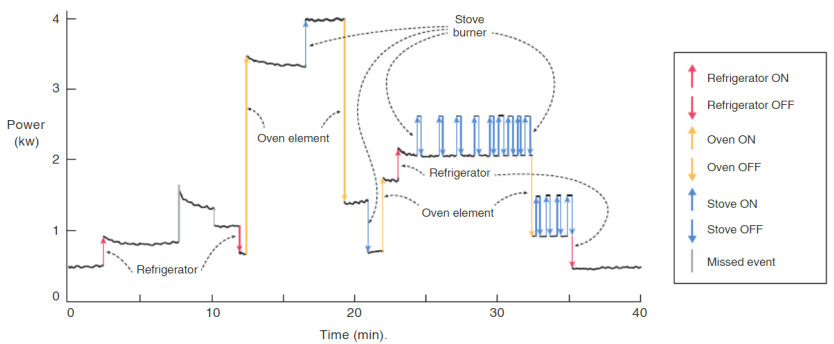
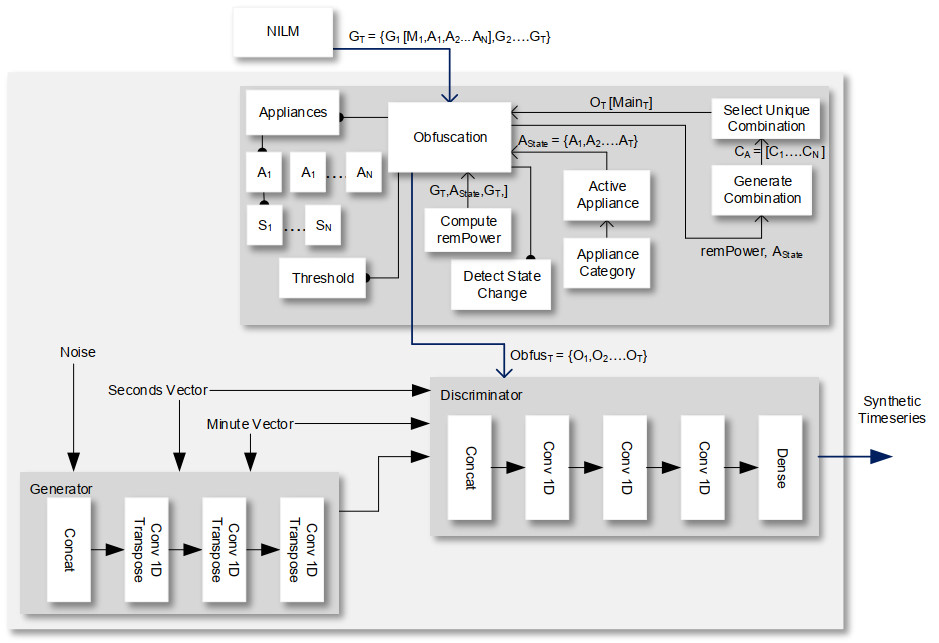
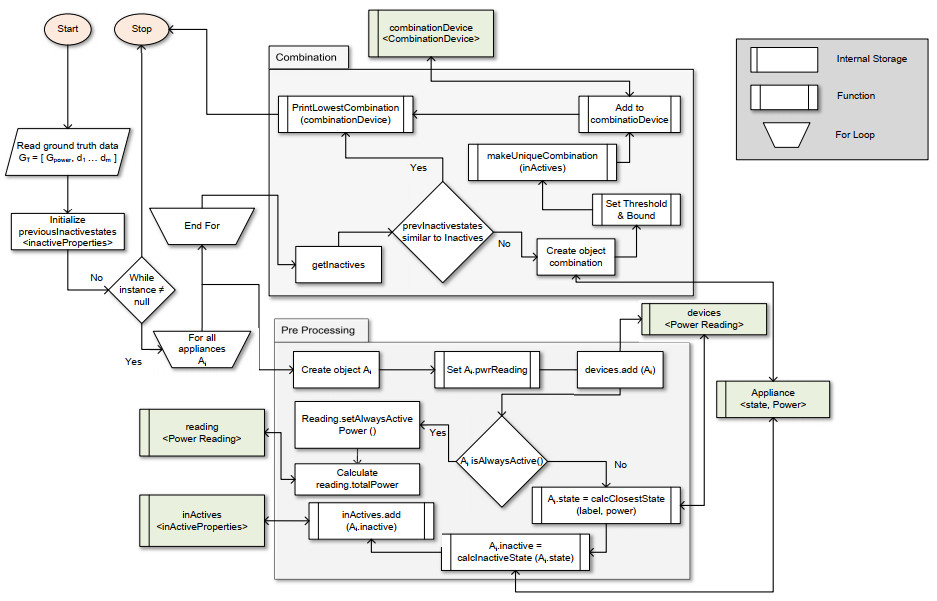
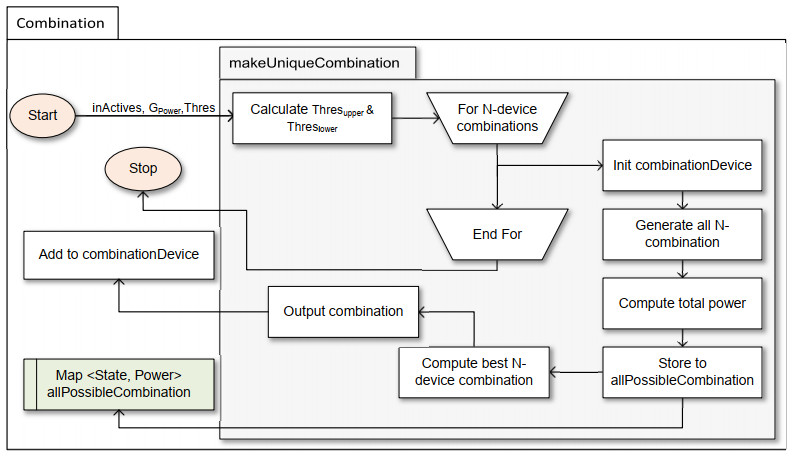

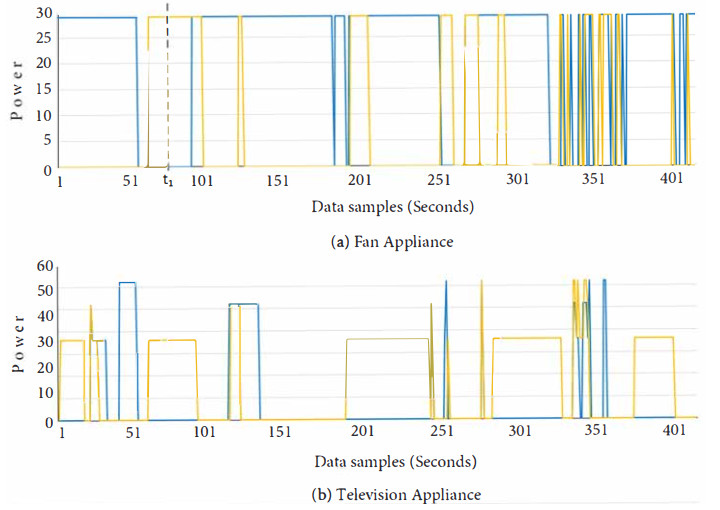


 DownLoad:
DownLoad: